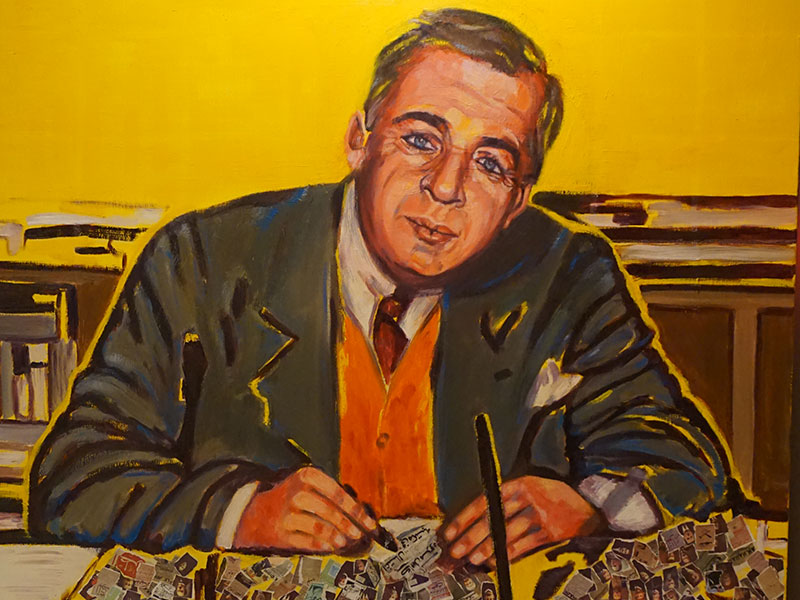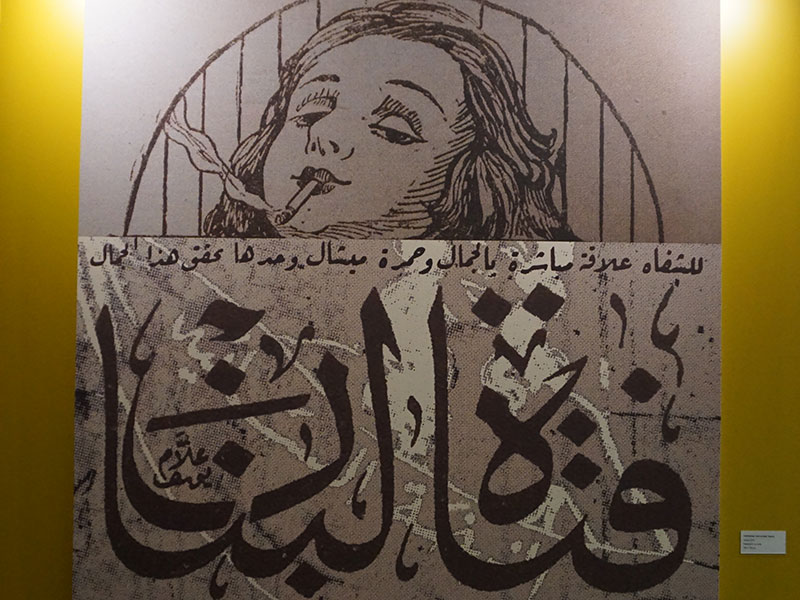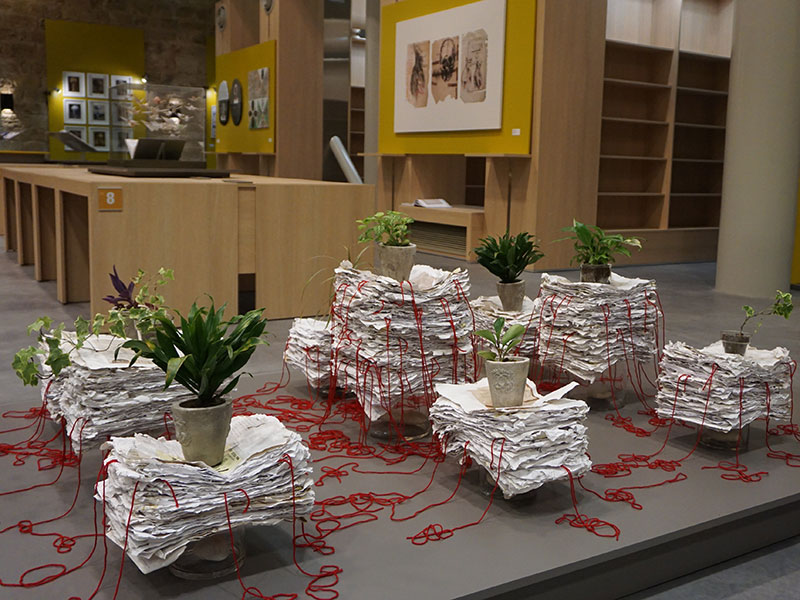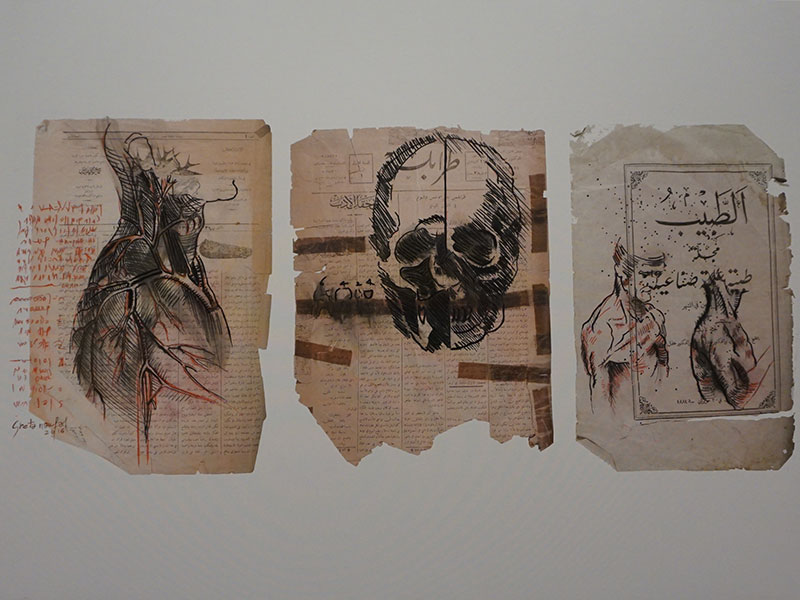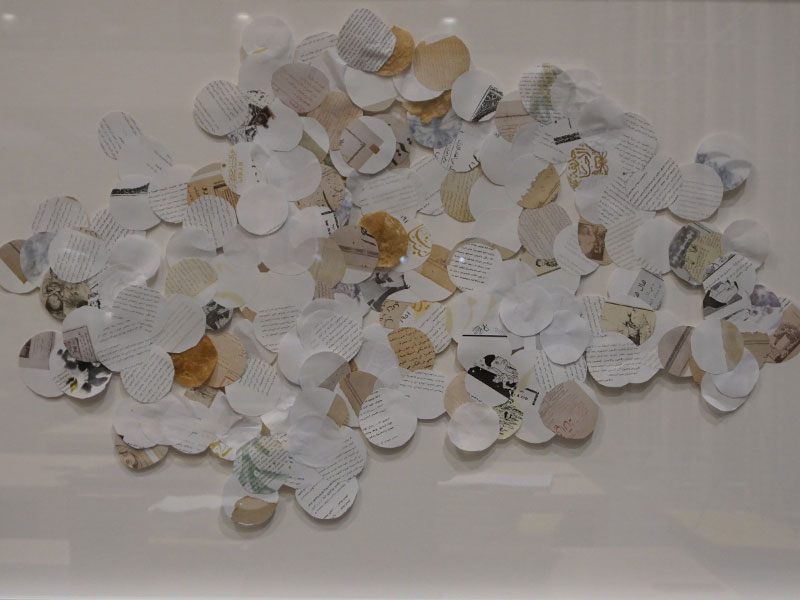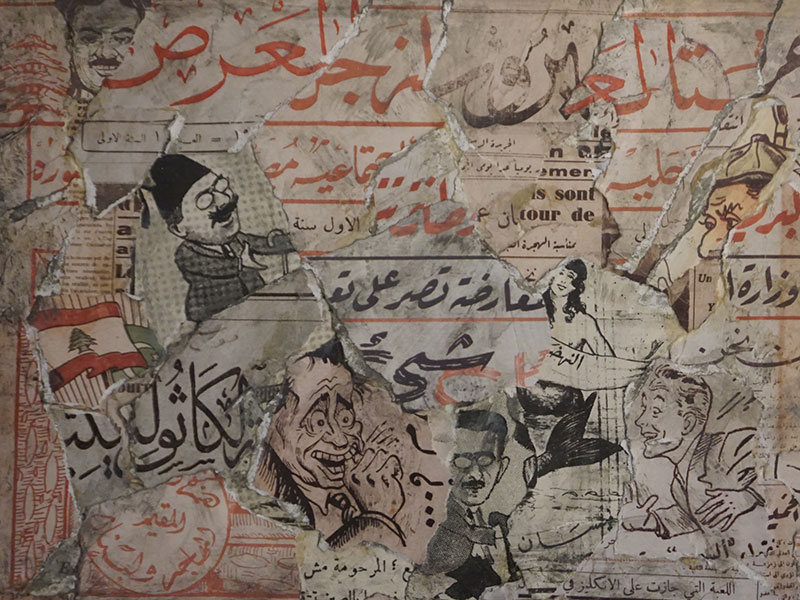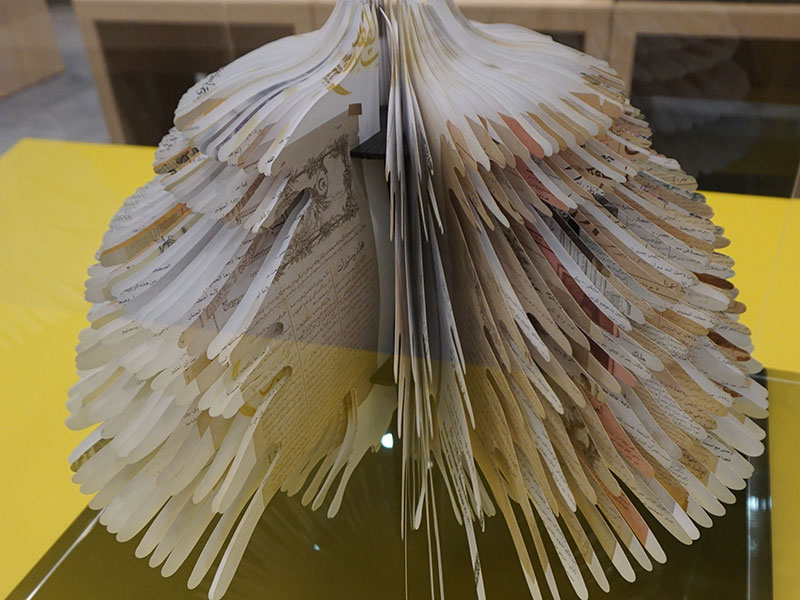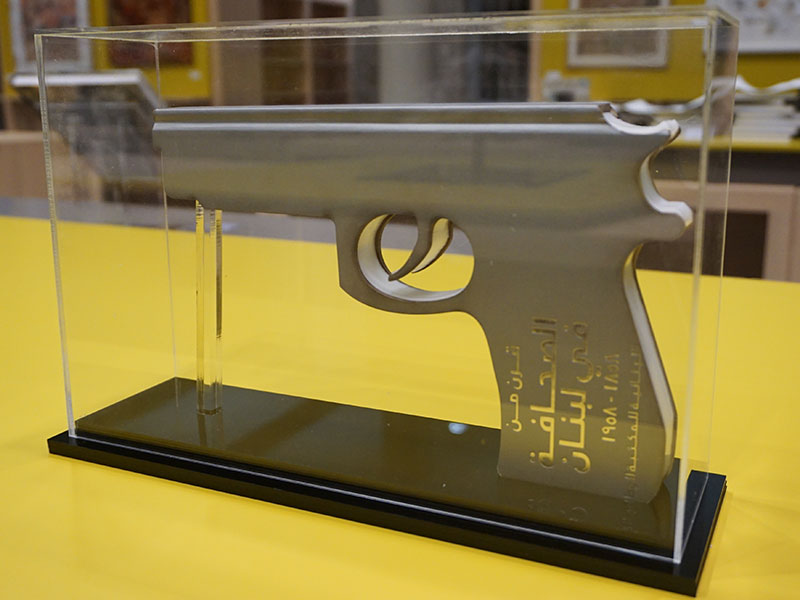Art for a National Cause
For two weeks in November, the Lebanese National Library was once again full of books. Recently renovated, but still awaiting the restoration of its collection, the library’s main reading room – with tall ceilings and full of light – hosted work by 55 Lebanese artists using misprinted copies of “100 Years of Press in Lebanon.”
Of the participating artists who donated their work to support of the restoration efforts, 15 were Lebanese American University faculty and alumni. Yasmine Taan, Chair of the Department of Art and Design at the university, praised LAU’s contribution to the cultural event. “I think it’s an important event that introduced people to the existence of such an inviting space [and] if we combine all these artworks and the effort that went into them, it’s a big amount of support,” she said.
The exhibition was held under the patronage of the Ministry of Culture, in partnership with The Lebanese National Library Foundation - which was established in 2000 to promote and fundraise for the restoration of the library that was badly damaged during the civil war. Nadine Begdache from Beirut’s Galerie Janine Rubeiz, recruited the 55 artists and curated the exhibition.
Participant Dalia Baassiri graduated from LAU in 2003 with a degree in Graphic Design and, like the other artists who agreed to donate their work for this exhibition, thought it an important cause. “There is very little that is national, for everybody, in Lebanon. Ever since I heard about this [project] I thought, ‘wow this is great,’” she said. She was one of the many whose work responded directly to the theme of the book all the artists used as a basis for their work. “It wasn’t about me, it was about the subject itself. A whole century of journalism is a big deal.”
“100 Years of Press in Lebanon” was originally published to accompany an exhibition of the same name in 2010, but roughly 600 copies were misprinted left both unsellable and unused, until now. “This book united us,” Greta Naufal, who teaches at LAU, said. “Because of this book, we have been all together. We come back to the book, the importance of the book, in the age of technology.”
Along with Naufal and Baassiri, LAU alumnae Zeina Badran, Rim Al Jundi and Mireille Merhej also responded to the subject and content of the book directly. Merhej, who usually works in collage, created two pieces resembling newspaper pages cobbled together from images of the print media in the book. With Badran carving the book into the shape of a gun, and Jundi’s ten layered portraits of assassinated journalists, they captured a common theme in the works, highlighting the power of words and the risks writers, and subjects, face.
Taan and Randa Ali Ahmad also focused on the content of the book, but rather on what was missing. Ahmad painted an arresting portrait of a journalist she was shocked was not included, while Taan highlighted the remarkable absence of women. “It was very important in my project to say that if women did not exist in the [written] history it doesn’t mean they didn’t exist at all.”
Still others looked beyond the content of the book to explore the broader importance of libraries, access to knowledge and books in general. Amal Saade, Rached Bohsali and Hanibal Srouji, each members of the LAU faculty, had elements in their work playing on knowledge, how it is transferred, used and it’s significance.
“For me, what was important regarding the National Library was that of course there are books there,” Saade said, while talking about how her work used living plants linked by red string to show the connections and growth that come from the pages of books. “I think what is missing in Lebanon is a culture of knowledge transmission and this is what you have through books.”
Bohsali combined origami – folding the pages of the book into a handwritten form of the Arabic word for “read” - collage, paint and a spotlight. “The spotlight represents learning as light,” he explained.
Srouji has been working on the concept of healing bands in his work for some time. He continued in this thread by creating long panels out of pages of the book. “ I wanted to change the book from something containing information into a healing idea,” he said. “I added neon clouds because I wanted the word, the book, the healing to become a source of light.”
Meanwhile, fellow faculty member Suyin Tsang Srouji reflected on knowledge in the broad sense. Her collage took an indefinite form, suspended in space to reveal “the accumulation of information or misinformation.” Her colleague Christine Kettaneh often uses words and language in her writing and created a new accordion style book with silhouetted hats, white against black pages.
Maria Kassab, who graduated from LAU in 2003, pulled the scope still further from Lebanon, its history and future through manipulating pictures to create an iconic image. “The concept of revival is linked to my work, since it is rooted in and inspired by the political climate,” she explained. Alumna Liane Rabath also created an iconic image, using the book’s pages to create a fanned Cedar tree.
Ghassan Ghazal, who taught at LAU and passed away unexpectedly earlier this year, was also represented with the silver covered book placed into a perfectly cut nook in a broad canvas so the book blended in seamlessly with its surroundings.
The exhibition concept and the work produced were reflective of the larger mission of the National Library to provide an important resource that is accessible to all. “There’s very little that is open and free to the public,” Mirella Faddoul, who works with the Lebanese National Library Foundation, explained. Of the artists, she said “they gave everything, it’s for the cause of the National Library and they were really in it.”
Taan added how highlighting the artists’ role within social contexts was fundamental to the new vision for the Fine Arts program at the university. “It’s not only about aesthetics, but about social activism, social responsibility and looking into the needs of the community to try to address them,” she said. “We do believe that art can make a difference… we want to challenge students to start looking into new roles for artists or where change should happen.”
